How does a dishwasher work?
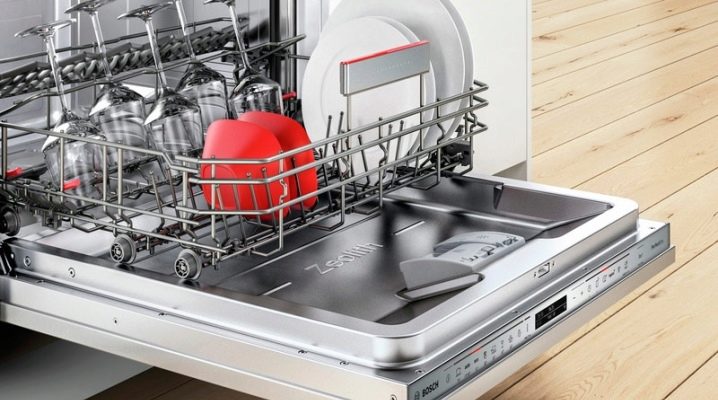
The vast majority of people these days are happy to use modern vacuum cleaners and washing machines instead of brooms and regular wash basins. However, automated dishwashers are less common. This is largely due to some mistrust regarding the effectiveness of such household appliances. In other words, there is doubt that it will not be able to provide maximum shine and clarity. To disprove stereotypes, you need to understand exactly how the dishwasher works.



Device
Most often, built-in models of the considered equipment with vertical loading are used. Every dishwasher is designed so that water is supplied at the required temperature in sufficient volume.
On the network, you can easily find detailed diagrams of such devices with a detailed description of all units and individual structural elements.
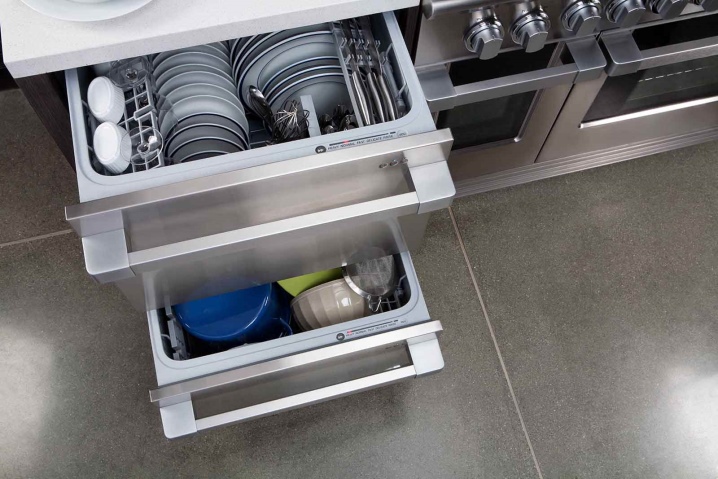
The internal structure of a household PMM with a relatively small size of the case may include the following components:
- circulation pump responsible for supplying water to the chamber;
- drain pump;
- an ion exchanger designed to soften the water used;
- instantaneous electric heater, paired with a thermostat that provides protection;
- sensors that monitor water level and temperature indicators;
- water supply system filter;
- a filter element responsible for the separation of large particles in the effluent;
- inner chamber made of high quality stainless steel;
- water sprinklers (lower and upper);
- controls, including display.


In addition to all of the above, some PMM models are equipped with a fan. This structural element is used for drying dishes at the final stage of washing. The list of additional equipment also includes:
- additional heater and cooler, what is needed for accelerated drying in turbo mode;
- sensor, by means of which the degree of water purity is determined, - this element ensures the choice of the optimal operating mode of the unit in question;
- optionally installed by the manufacturer sensorrinse aid control;
- separate temperature control sensor the environment at the stage of drying the washed dishes;
- tank for mineral zeolite - this substance is capable of being a source of dry heat, this option is present in representatives of the Bosch and Neff model lines;
- a special device responsible for controlling the level of hardness of the water used - based on the readings of this sensor, the technician himself chooses the operating mode in each specific case.
It is important to consider that the list of equipment determines the cost of the dishwasher. It means that the arsenal of additional functions will require corresponding additional costs.
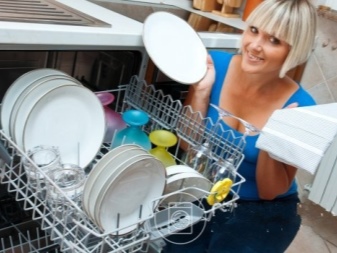
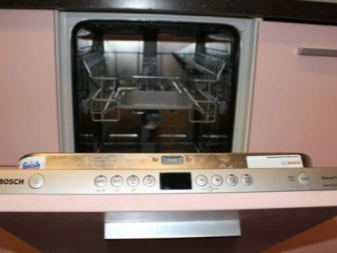
Thanks to the use of modern electrical circuits for the described household equipment, it was possible to minimize the amount of energy consumed. At the same time, the efficiency of the machines does not decrease. It should be noted that the overwhelming majority of PMM belongs to the "A ++" category. In this case, the wiring diagrams have important features:
- installation of devices that provide reliable protection of the device against overloads;
- the equipment is connected to the network using the most ordinary cable with a plug;
- many models operate from 220 V;
- taking into account the basic characteristics of the machines, they can be connected to a standard household network.

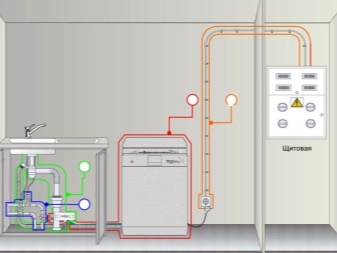
Particularly noteworthy is such a PMM unit as an ion exchanger with salt. Such an element is most relevant if hard water is used, which is the main reason for the appearance of scale on the heater.
This in itself has a negative effect on the efficiency of the equipment and its service life. This container is made of high quality steel for durability.
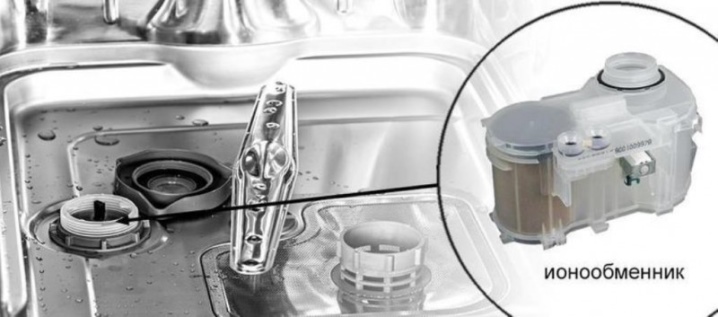
One of the biggest troubles that modern dishwasher owners have to face is leaks... The consequences of such emergencies are sometimes quite serious. With this in mind, equipment manufacturers equip their models with special functions. This is about Aqua-Control and Aqua-Stop.

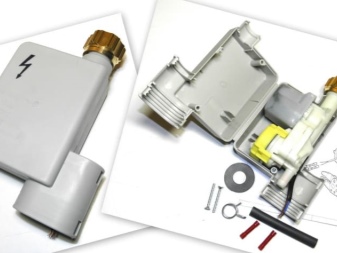
In order to prevent leaks that can cause damage to the premises, including the neighboring one, it is necessary to identify the malfunction in a timely manner. For this, the PMM is responsible for the float located in the pallet of the apparatus.
As soon as the system receives a message about a leak, the water supply will automatically turn off. The shut-off element in this case is a block consisting of 2 solenoid valves. It is located at the end of the dishwasher inlet hose. One of the valves is constantly in the open position, and the second is working and is triggered only after the machine is activated.


Principle of operation
Many users are interested in what exactly happens inside a dish-cleaning machine after pressing the "Start" button. Unfortunately, you won't be able to see what actions are performed there. First of all, it is worth noting that for washing dishes in the PMM you will need:
- detergent;
- salt for softening hard water;
- rinse aid.
One of the key advantages of dishwashers is that there is no need to use sponges, brushes and other tools. The main requirement is to load the dishes correctly. Otherwise, it will not be washed well. It should also be borne in mind that each model has a certain volume. The vast majority of household machines are designed for 6 - 12 sets.
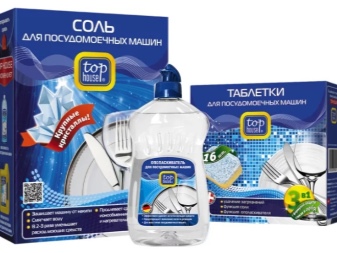
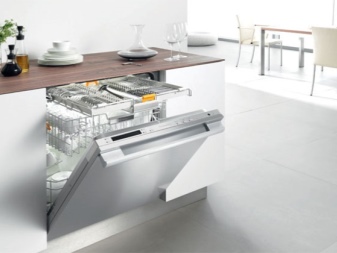
As already noted, the use of this type of technique allows significantly reduce the consumption of water consumed in comparison with manual washing of dishes... After downloading, you need to decide on the choice of the operating mode, that is, the sequence of certain stages and their parameters. Full cycle times range from 25 to 160 minutes.
It should be noted that when you activate pre-soaking and rinsing, the washing duration will automatically be increased by 20 minutes. For the same time period, the process will be delayed when the water warms up to a mark of 70 degrees.
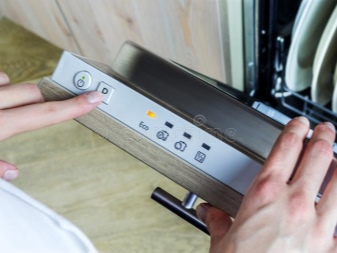

As the reviews show, housewives most often use the following four modes:
- intensive - for washing heavily soiled dishes (70 degrees, 60 minutes);
- normal - with additional rinsing and drying (100 minutes);
- quick - removal of light dirt (30 minutes);
- economical - elimination of common contaminants with economical distribution of basic consumables (120 minutes).
After the completion of the main stage (directly the washing itself with the appropriate means), the machine proceeds to rinsing, and then drying. As a result, the utensils come out of the PMM, ready for use. It is worth noting that the final result of the whole process directly depends on the last two stages. But it is important to take into account that the duration of all stages of the working cycle determines the consumption of resources, and, consequently, the cost of washing.

Water collection and preparation
This will be the initial stage, at which the PMM chamber is initially filled with water in the required volume. As a rule, it is cold, but some models also have a connection to a hot water supply.The water is passed through the ion exchanger, being cleaned of excess impurities and softening. The next stage is mixing with detergent.
After that, the water is heated to the temperature corresponding to the program selected by the user. The heating element or the instantaneous water heater is responsible for achieving the required parameters, depending on the dishwasher model. It is worth noting that the second option works faster, but at the same time spends more energy.
An equally important point is that replacing a conventional heating element will be cheaper.

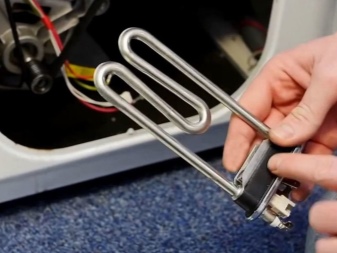
Spraying working solution
The water prepared during the described stages (heated to a certain temperature and mixed with the detergent) is supplied under pressure to the sprinklers. Most often, the top and bottom are installed, but there are models with additional side devices. Due to the rotation of special rocker arms, water is evenly distributed throughout the washing chamber.
The dishes in the PMM are completely moistened with hot water and detergent. At this time, dirt is removed from the surfaces of objects. The used water gradually flows down, is filtered and again enters the sprinklers. This process is repeated until the completion of the corresponding stage of the program. After the last cycle, the dirty water is discharged into the sewer.
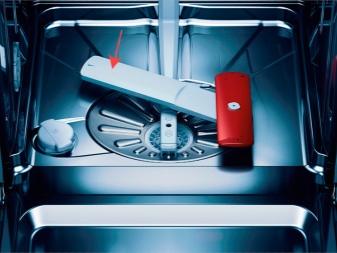
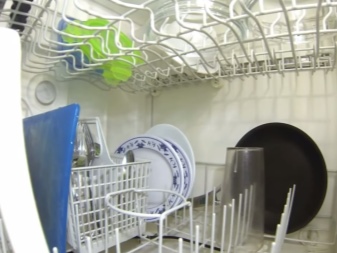
Rinsing
In the penultimate stage, the pre-treated dishes are rinsed. In this case, a solution of water and a special liquid agent is used. The mixture is also fed into the chamber under pressure through sprayers and removes the last traces of dirt as well as detergents.
Taking into account the peculiarities of the chosen program, this stage can consist of one or two cycles. After their completion, the water is drained from the chamber.
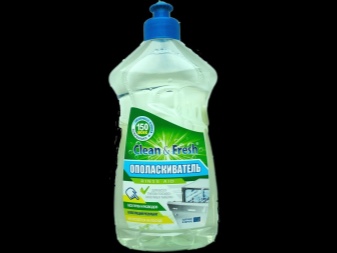

Drying
Washing and rinsing itself is not an exhaustive step in the entire process. Its final completion will be the drying of the items placed in the chamber. The first drying option is moisture evaporation, which is a natural phenomenon and requires a significant amount of time. Special fans can significantly speed up the procedure.
The described mode is absent only in budget modifications. The vast majority of dishwashers are equipped with:
- heat exchangers (drying based on condensation);
- heating coils and fans (turbo mode);
- zeolite blocks.
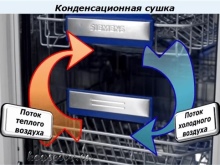
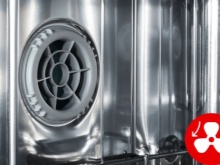
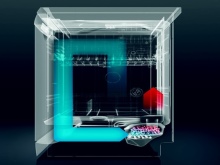
The heat exchanger in this case is a durable plastic container that contains cold water. Its principle of operation is based on the fact that after the completion of all previous cycles of the program, the remaining moisture begins to evaporate and in the form of condensate to settle outside this block.
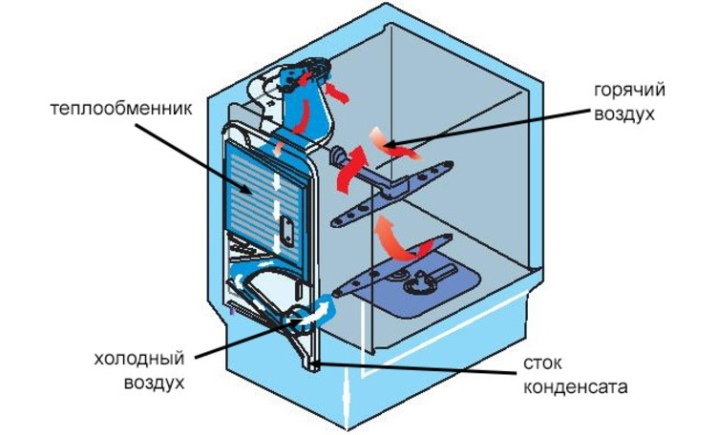
The work of the tandem of the spiral and the fan is as efficient as possible.
However, here it is worth considering a number of nuances. The first is associated with an increase in the amount of energy used. In addition, it is important to pay attention to the seal on the cover of the machine to prevent leaks and also to minimize the noise generated by the fan.
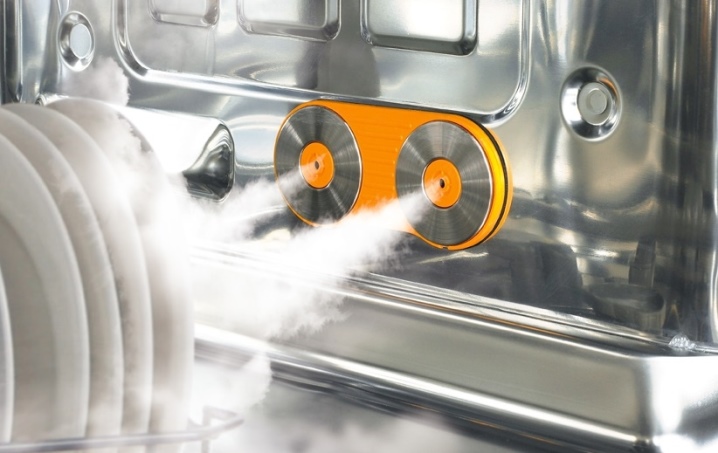
The third method of drying dishes in the PMM is the most modern. Zeolite, in the process of absorbing moisture, begins to actively generate heat. The main advantage of this material is its ability to heal itself, which means that it does not need to be changed.
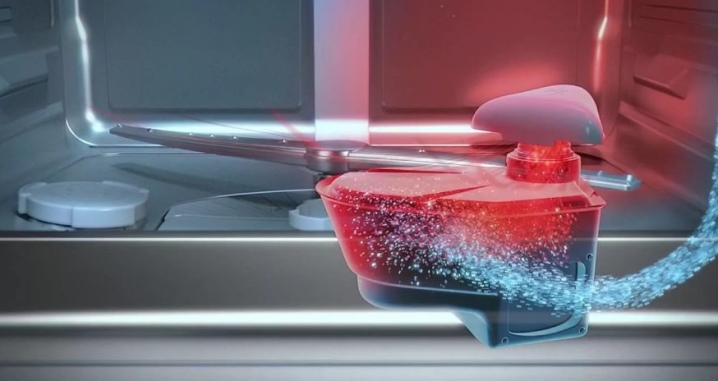
Distinctive features of different models
At the moment, there is more than a wide range of dishwashers in the corresponding segment of the market for modern household appliances. In conditions of rather tough competition, manufacturers are trying to distinguish their models through additional options and systems. Regardless of the brand, the general principle of operation is the same for all PMMs. At the same time, some representatives of the lineup of a particular brand may have their own characteristics and additional devices.
- Heat exchangers that save energy consumption while drying dishes.However, it is important to take into account that the duration of this stage is increasing.
- Water purity analyzers.
- Sensors that detect the presence of powder or detergent gel capsule.
- Sensors responsible for determining the moisture content of already washed dishes.
- Additional fasteners for installing especially fragile dishes and glasses (glasses).
- Turbo drying systems to significantly speed up the finishing phase.
- Backlight activated when the door is opened.
- High strength transparent glass used as a decorative element of the structure.
- A device that projects a timer onto the floor of the room.
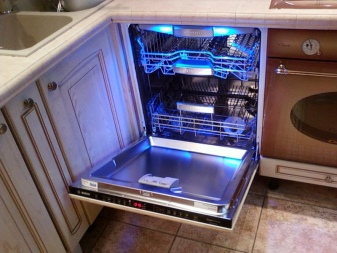

Based on the performance characteristics of a particular model, its functionality can be determined. For example, in some PMMs, you can wash different root crops (of course, without adding detergent). The PMM treats combs, rubber shoes and children's toys. Also, such household appliances allow you to cook steamed dishes or in the simmering mode.
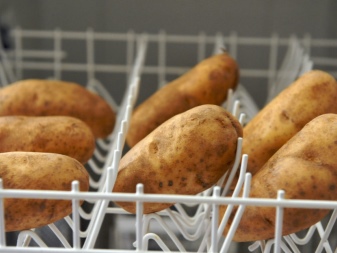
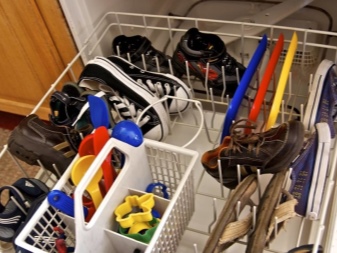













The comment was sent successfully.